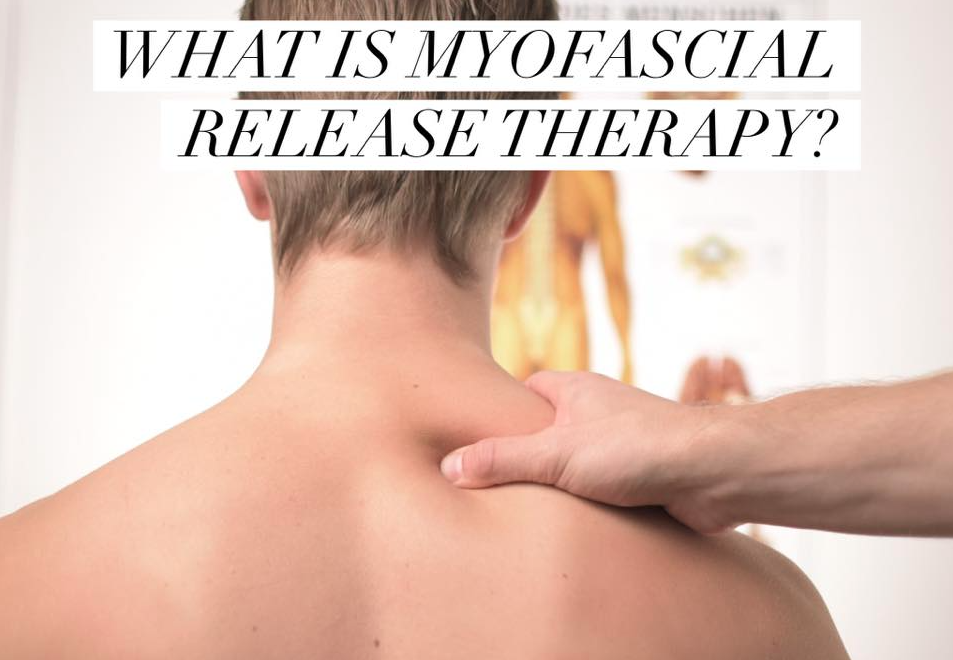The Comprehensive Guide to Dry Needling for Musculoskeletal Pain
Musculoskeletal Pain Relief

Unlocking Relief: The Comprehensive Guide to Dry Needling for Musculoskeletal Pain
Musculoskeletal pain affects a staggering 1.7 billion people globally, making it a leading cause of disability in around 160 countries, as reported by the World Health Organization (WHO). Traditional treatments, including medications, surgery, and steroid injections, often come with risks and prolonged recovery times. As a result, an increasing number of individuals are turning to non-surgical, drug-free alternatives for pain relief. One such alternative gaining prominence is dry needling, a technique that may seem intimidating but holds immense benefits for those suffering from chronic muscle pain and joint issues.
Understanding Musculoskeletal Pain
Musculoskeletal pain encompasses a wide range of conditions that affect the bones, muscles, joints, ligaments, and tendons. Its impact can be profound, interfering with daily life and diminishing overall well-being. The prevalence of musculoskeletal pain highlights the need for effective, minimally invasive treatments that provide immediate relief without the drawbacks associated with traditional approaches.
Enter Dry Needling
Dry needling emerges as a promising solution for individuals seeking a natural remedy for pain management. This technique, despite its name, offers remarkable benefits that extend beyond initial expectations. By delving into the practice of dry needling, individuals can gain insights into its effectiveness and understand how it stands out among alternative therapies.
Understanding Dry Needling
Dry needling is a form of physical therapy that utilizes fine needles inserted into the skin and muscles to trigger a healing response. The primary focus of this technique is on myofascial trigger points (MTrP), which are hyperirritable spots in muscles that contribute to tenderness, chronic pain, and restricted range of motion.
The modern use of dry needling can be traced back to Karel Lewit of Czechoslovakia, who introduced the term "needle effect" to describe the immediate pain relief achieved by needling specific points. During a dry needling session, a trained practitioner strategically inserts needles into painful or tight areas, effectively easing pain, stimulating healing, and restoring mobility.
Different Techniques in Dry Needling
Dry needling employs various techniques, each suited to address specific purposes. The "in and out" technique involves puncturing the target muscle directly with the needle, providing direct relief to trigger points. On the other hand, the "non-trigger points" technique involves inserting needles into the periphery of the affected muscle, making it ideal for nonspecific diffuse pain.
It's crucial to recognize that dry needling is rarely a stand-alone treatment for muscle pain. Instead, it complements other therapies, such as physical therapy, heat therapy, and exercise, working synergistically to enhance overall effectiveness.
Dry Needling vs. Traditional Acupuncture
Dry needling and acupuncture are often confused due to some shared characteristics. While both involve the use of needles, they have distinct origins and methods. Traditional acupuncture, rooted in Chinese medicine, centers around the concept of "chi energy" and aims to normalize the body's energy flow. In contrast, dry needling is a scientifically-based medical treatment specifically designed for musculoskeletal pain.
The insertion of needles in dry needling stimulates biological events in the body, leading to therapeutic relief and the restoration of muscular function. It is essential for individuals considering either therapy to consult with their healthcare provider to determine the most suitable treatment for their pain.
Mechanisms of Action: How Does Dry Needling Work?
The precise mechanisms of action in dry needling remain under investigation, but existing studies suggest several ways in which it brings about pain relief and improved functionality.
- Vasodilation: Tight and sore muscles often lack adequate blood and oxygen supply due to their contracted state. Dry needling induces vasodilation, widening blood vessels in the targeted area, allowing nutrients to permeate and relieving pain.
- Blocks Pain Receptors: Acupuncture analgesia, or pain relief, occurs after needling. The process triggers the release of neurotransmitters like dynorphin, endorphin, and enkephalin, which act as the body's natural painkillers. These neurotransmitters block the transmission of pain signals from receptors to the spinal cord and brain.
- Stimulates Local Twitch Response (LTR): Dry needling acts as a mechanical stimulation, causing involuntary muscle contractions mediated by the spinal cord. This reduces the concentration of nociceptive substances, chemicals that register pain.
- Muscle Regeneration: The insertion of the dry needle may cause a small focal traumatic lesion, activating the tissue healing process. This prompts cell migration to the affected area and activates muscle fiber repair or replacement.
These biological effects result in reduced muscle tightness, increased blood flow, and an overall decrease in pain, establishing dry needling as an effective and reliable method for treating musculoskeletal pain at its source.
Benefits of Dry Needling for Muscle Pain
- Pain Relief: Studies demonstrate that dry needling can effectively treat myofascial pain and chronic musculoskeletal pain, providing immediate effects and short-term improvement with only a few sessions.
- Muscle Relaxation: Dry needling proves beneficial for individuals experiencing stiff or knotted muscles. These conditions arise when muscle fibers contract and fail to return to a relaxed state, often due to stress, injury, or other abnormalities. By targeting myofascial trigger points, dry needling induces muscle twitching, helping the muscle relax, return to its natural state, and restore movement.
- Restoration of Muscle Function: As dry needling alleviates trigger points, the treated muscles become less stiff and tense. This results in improved mobility and a restored range of motion. Athletes, in particular, can benefit from dry needling as it enhances muscle flexibility and overall performance.
- Accelerated Recovery Time: One of the notable biological effects of dry needling is vasodilation, which increases blood flow to the affected area. This surge in oxygen and nutrient supply promotes faster muscle healing. Moreover, the minimal downtime associated with dry needling allows individuals to resume their daily activities shortly after the procedure.
- Cost-Effectiveness: Compared to invasive surgeries and lengthy recovery processes, dry needling emerges as a cost-effective option for pain management. Its minimal invasiveness and low risk of complications make it an accessible and affordable choice for individuals seeking effective pain relief without breaking the bank.
Conditions Treated with Dry Needling
Dry needling can address various musculoskeletal conditions, making it a versatile component of comprehensive treatment plans. Whether individuals are dealing with acute or chronic injuries, headaches, knee pain, hip pain, neck pain, low back pain, muscle spasms, strains, tendinitis, sciatica, or fibromyalgia, dry needling can be incorporated into a tailored treatment approach.
It's important to note that dry needling is most effective when used in conjunction with other therapies, such as manual therapy, exercise, and heat therapy. This multidimensional approach ensures a holistic and targeted treatment strategy for each individual's unique condition.
Am I a Candidate for Dry Needling?
While dry needling offers promising benefits, it may not be suitable for everyone. Certain individuals, such as children under 12 years old, pregnant women, those recovering from surgery, individuals taking blood-thinners, and those with a fear of needles or a history of adverse reactions to injections, should consult their healthcare provider before opting for dry needling. Seeking professional medical advice ensures a safe and tailored approach to pain management.
Safety Measures in Dry Needling
Ensuring the safety and efficacy of dry needling requires adherence to strict safety measures. Practitioners use sterile needles packaged for single use, minimizing the risk of infections or complications. Additionally, the clean technique, where needles are used only once and all equipment is sterilized, further contributes to a safe environment.
Qualified medical practitioners undergo extensive training in dry needling, equipping them with the skills to detect symptoms, diagnose conditions, and perform the necessary techniques safely. This commitment to safety, combined with the use of fine needles, significantly reduces the incidence of bleeding or bruising.
Complications and Side Effects
While complications and adverse effects from dry needling are rare, it's essential to be aware of potential issues. Minor side effects may include mild bleeding, bruising, or pain at the needle site, which typically resolve shortly after the procedure. Red needle marks may also appear temporarily.
Serious complications, such as pneumothorax (accidental lung puncture), are extremely rare and limited to specific areas like the trapezius muscle. It's crucial to choose a certified professional to perform dry needling, reducing the risk of contracting diseases with non sterile needles.
Outlook on Dry Needling
Dry needling presents a promising avenue for treating various musculoskeletal problems, including neck pain, back pain, shoulder pain, and hip pain. While further studies are needed to validate its effectiveness comprehensively, existing evidence positions dry needling as a fast, safe, and cost-effective method for managing and treating pain.
The procedure aims to inactivate trigger points, restore muscle function, and provide relief without significant risks or complications. Furthermore, dry needling's integration into broader therapy plans enhances its overall efficacy, making it a valuable component in the realm of pain management.
Consultation and Conclusion
For those considering dry needling for muscle pain, consulting with a medical provider is paramount. Healthcare professionals can assess individual conditions, provide personalized recommendations, and ensure that the chosen treatment aligns with the patient's overall well-being.
In conclusion, dry needling emerges as a beacon of hope for individuals seeking natural and effective solutions to musculoskeletal pain. Its ability to target pain at its source, coupled with the multitude of benefits it offers, positions dry needling as a valuable tool in the comprehensive landscape of pain management. To unlock relief and embark on a journey towards improved muscle health, individuals are encouraged to explore the potential of dry needling in consultation with their healthcare providers.
Omaha Chiropractors and Acupuncture




CONTACT
CONTACT
SERVICES
QUICK LINKS
QUICK LINKS
BUSINESS HOURS
- Mon - Wed
- - -
- Thursday
- - -
- Friday
- -
- Sat - Sun
- Closed
Copyright Komp Chiropractic and Acupuncture Clinic | Proudly Powered by Snapps






